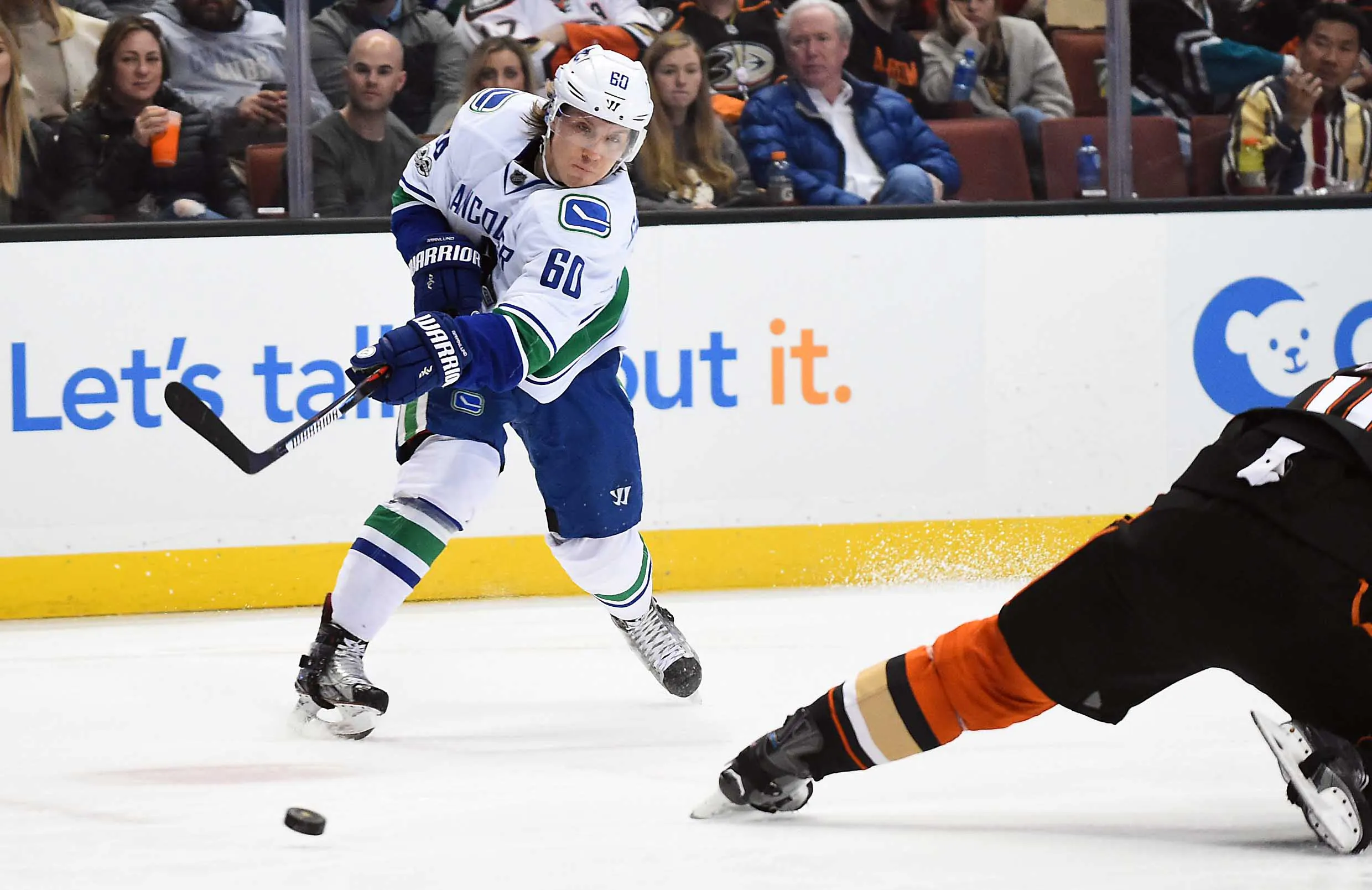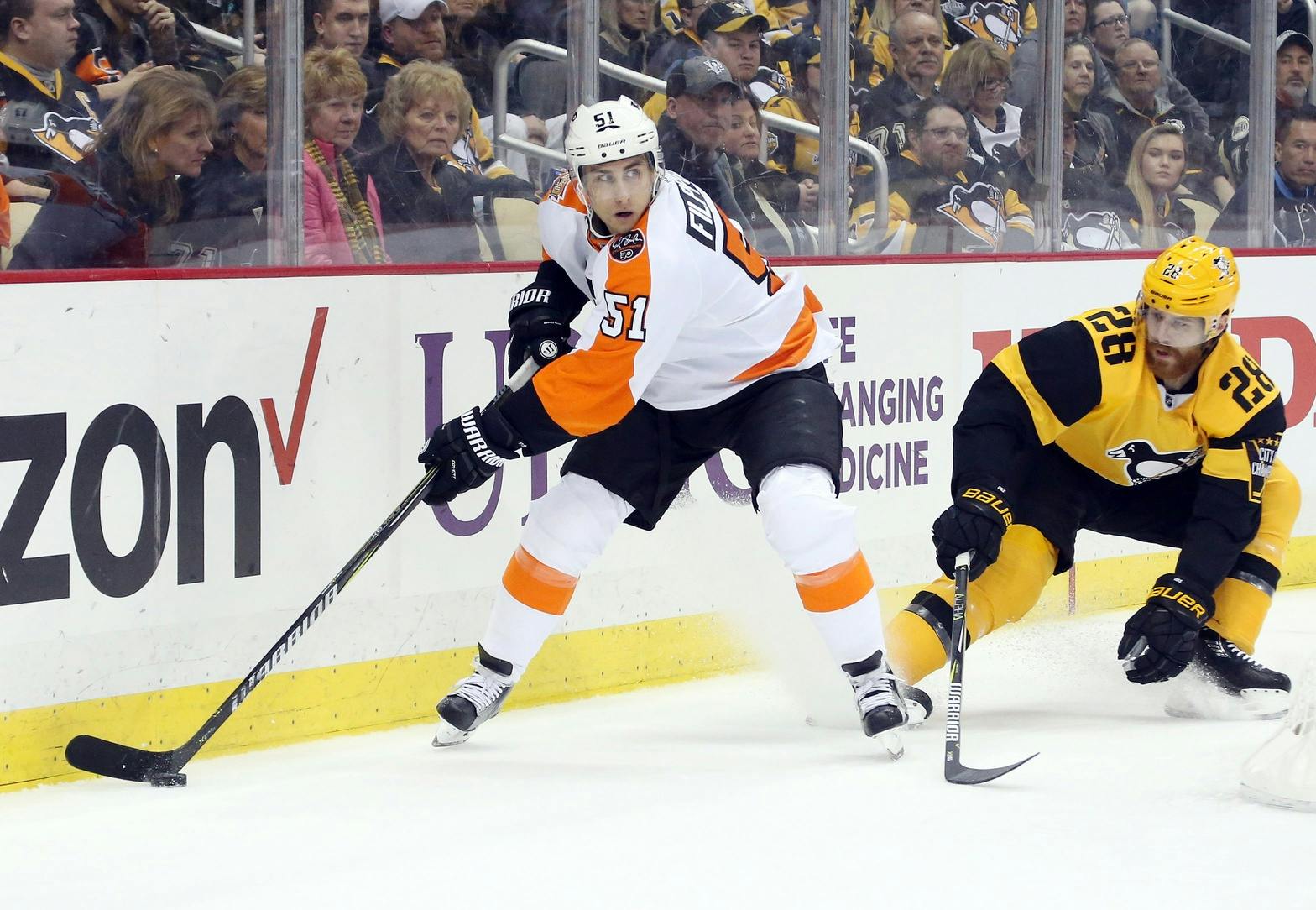How high is Markus Granlund’s ceiling as an NHL player?

Markus Granlund is in what, historically, is a precarious position for an NHL player. He’s still young, but no longer inexperienced. He’s shown he can score in the majors, but not for a long enough period or at a high enough level to make him a no-questions-asked top-six forward.
Site editor J.D. Burke took a long look at Granlund’s 2016-17 a month ago, digging into his performance and his future from an advanced statistics perspective. I wanted to take a different tack today, looking at how things progressed for some past players who had a career progression similar to that of Granlund.
The Process
Before we get to the historical comparables for Granlund, I wanted to spend a little bit of time explaining how the list I ended up with was created. I’ve put it all here in one neat section so that interested readers can go through the logic themselves, and uninterested readers can skip right over it to the next heading.
I started with the entire list of NHL forwards since 1997-98 who met three basic criteria that Granlund did last season:
- They were the same age (23-years-old)
- They scored at the same basic points/game clip as Granlund (between 0.40 and 0.52, creating a band around Granlund’s 0.46)
- They were good finishers (Granlund scored on 16 percent of his shots last season and is at 14 percent on his career; I eliminated every player who scored on less than 10 percent of his shots at age 23)
Using Hockey-Reference.com, that created a list of 38 possible comparables. What I wanted, though, were players who had been through the same kind of apprenticeship as Granlund. So I cut the list down further, reducing it solely to players who a) spent time in the AHL at 20 or 21 b) spent time in the NHL at 21 or 22 and c) performed better offensively at 23 than they had in previous years. This knocked that list down to just 12 names.
It’s worth taking a bit more care with these names, because this is the point in the process where we try to identify players whose skills and playing style are better fits for Granlund.
This is difficult because we don’t have analytics data for a lot of these players. I decided to use penalty killing time as a proxy for playing style. Granlund is a hybrid player of sorts, not a true defensive specialist but definitely a player seen as having value on the defensive side of the puck.
I started by eliminating the true defensive specialists, defined here as players who spent at least a minute more per game on the penalty kill at age 23 than Granlund did. This eliminated four players: Ryan Kesler, Antoine Vermette, Matt Cooke and Max Talbot, all of whom entered the league with much greater defensive reputations than that currently carried by Granlund.
On the other end of the spectrum, I also eliminated players who weren’t trusted with that work by their coaches at age 23. That knocked four more names off the list: Jamie McGinn, Chuck Kobasew, Dan Paille and Dan Cleary.
That left just four comparable players, and in my mind, they represent the likely range of potential outcomes for Granlund.
The Comparables

Optimistic outcomes: Valtteri Filppula/Jiri Tlusty

If the Canucks are fortunate, Granlund will take after his countryman Valtteri Filppula, to whom he bears more than a passing resemblance as far as playing style goes. Just listen to this excerpt from the 2005 Future Watch edition of The Hockey News describing Filppula:
He has shown to be responsible defensively and has good vision on the ice. The key for him was to get stronger physically [note: he’s generally listed at 6’, 195 lbs today] and he has been maturing in that regard. If all goes well, Filppula could be a contributor in the NHL within a few years. Although his offensive skills might not be good enough to make him a game-breaker, some think he could complement talented wingers the way Brendan Morrison has done in Vancouver.
Granlund was strong in the AHL at age 20, while Filppula was still playing in Europe at that point. That, along with Detroit’s customarily patient approach to prospects, is as good an explanation as any for their differing assignments at age 21. At 22 and 23, the two are virtually mirror images of each other.
Filppula has had some strong offensive seasons (including career highs of 25 goals and 66 points) but mostly he’s settled in as a versatile middle-six centre/winger who can contribute in all situations.

Another potential outcome is a career in the Jiri Tlusty range, which is better than most people realize. Tlusty had four good years with the Hurricanes that nobody knows about because they happened in Carolina, and had the bad luck to have his most productive season (23 goals, 38 points) in a lockout-shortened 2012-13. If he’d scored 30 goals even once, as he surely would have if 2012-13 had run 82 games, he’d be looked upon more charitably.
Tlusty is a little bigger than Granlund/Filpulla, generally being listed at 6’ and 205 pounds, but like both players was drafted as a two-way talent. Despite going 13th overall in 2006, The Hockey News that year projected him as a third-line player on a top team but someone who might be able to stick in a top-six role if everything broke right.
Pessimistic outcomes: Juraj Kolnik/Ivan Novoseltsev

Juraj Kolnik is a somewhat less encouraging point of comparison, though the good news for Vancouver fans is that he’s not quite as good a match for Granlund as Tlusty/Filppula. Every step of the way, Kolnik stays a little behind Granlund, spending more time in the AHL and scoring just a touch less. Like Granlund, Kolnik was traded as a prospect, and given that he played for the Islanders and Panthers of the early 2000’s it’s hard to argue that this was a function of being buried behind a good team.
The 5’11”, 190-pound Kolnik had three pretty decent seasons for Florida, topping out at 15 goals, then left the NHL in 2007. Judging by the way he dominated the Swiss league for the next three years, he probably could have kept playing in the majors until age 30 without trouble if he’d landed in the right situation.

Ivan Novoseltsev represents the worst-case scenario, and while his numbers are mostly in-line with Granlund’s his AHL work at age 22 sets him apart. Novoseltsev played 34 games for the wretched Louisville Panthers that season, scoring just two goals and posting a whopping minus-20 rating. Louisville was the league’s worst team and plus/minus is a bad statistic in a lot of ways, but sometimes an AHL stats line is just so miserable that there’s no excusing it for a supposed NHL prospect.
Novoseltsev would put up 27 points the next year, wash out of the league at 25 and be playing in second-tier Russian leagues at 26. Random trivia point: He’s one of two uncles of current Tampa Bay Lightning centre Vlad Namestnikov to make it to the NHL; the other was the far more successful Slava Kozlov.
For the most part, these comparisons favour Granlund. The guys he looks the most like have had good NHL careers, and the one really disastrous player on this list had a flashing warning sign at age 23 that Granlund doesn’t have to worry about.
Coming out of this exercise, I’m not quite as bullish on the player as Burke is, but I’m a long way from being down on him. I see someone who is probably going to be no worse than solid for the next three or four years, and who could potentially be a good deal better than that if the best comes to pass.
Recent articles from Jonathan Willis





